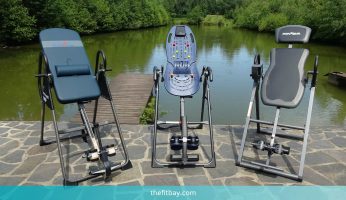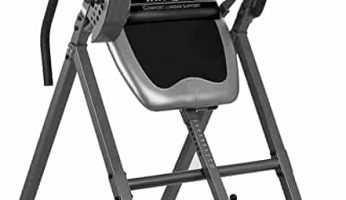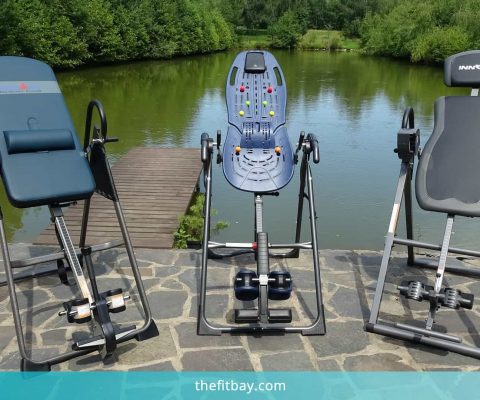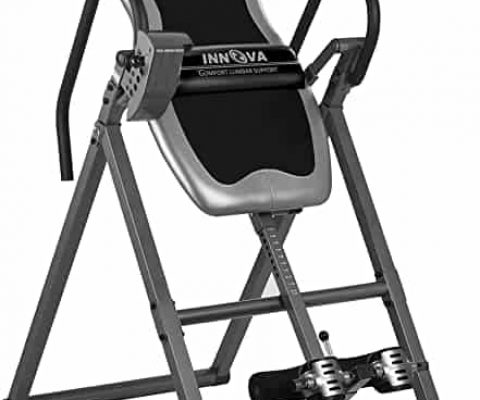Do Inversion Tables Help Back Pain?
Disclosure: We use affiliate links and may receive a small commission on purchases.
Are you currently suffering from pain in your back? Does this pain prevent you from performing some of your normal daily activities or avoid activity all together? Have you been told by your doctor that you have “stenosis” or “bulging discs?” Back pain can be a debilitating condition, and many times it will leave people desperate to find sources of relief so that they can return to their normal lives.
One treatment that is available to treat back pain is the use of inversion tables. Inversion tables strategically use gravity to provide decompression to tissues in and around the spine that may be causing pain. There is increasing scientific data that supports the use of inversion tables as an effective method of relieving back pain. This article will discuss back pain, some of its most common causes, and look at research on the effects of inversion tables on back pain.
One treatment that is available to treat back pain is the use of inversion tables. Inversion tables strategically use gravity to provide decompression to tissues in and around the spine that may be causing pain. There is increasing scientific data that supports the use of an inversion table for back pain relief, and we have chosen some of the very best ones for you!
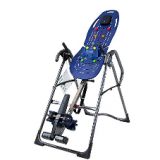
- Teeter EP-960 Ltd.
-
Our rating - Premium Features & Quality

- Innova ITM5900
-
Our rating - Heat & Massage Function
- Price: See Here


- IRONMAN Gravity 4000
-
Our rating - Comfort & Stability
- Price: See Here

Since there is not always a specific cause for back pain, there are several features of inversion tables that can be helpful to relieve pain. Typically, the more features that are included will help address all of the possible causes for non-specific back pain. These features include the following:
- Long handles and special handles for improved ability to stretch and achieve larger degrees of range of motion
- Lumbar support (lumbar pad) to maintain natural curvature of the lumbar spine
- Heat and massage factors for improved relaxation of surrounding tissues at the lumbar spine
- Acupressure Nodes for spot specific release of muscle trigger points in areas of pain
- Extended ankle mechanism to ease getting on and off
3 Best Inversion Tables for Back Pain
1. Teeter EP-960 Ltd.
2. Innova ITM5900

3. IRONMAN Gravity 4000

Do Inversion Tables Help Back Pain?
Yes, inversion tables are an effective method to use to help back pain. To understand why, we will discuss the causes and symptoms of back pain. Then we will talk about spinal decompression, why it can relieve back pain, and how inversion tables can provide this. Finally, we will touch on the recommended protocol using an inversion table for back pain, and how to use exercises in conjunction with inversion tables to maximize their benefit.
What is Back Pain?
Although the phrase “back pain” essentially describes itself, a more specific definition will be determined for this article. Back pain is often referred to “Nonspecific back pain.” This is because sometimes the cause of pain cannot be determined from diagnostic tests or imaging. Nonspecific back pain can be acute, resulting from some kind of injury, prolonged awkward positioning, or repetitive motion. It may also become chronic, in which people will suffer from persistent pain due to a hypersensitivity of the nervous system without any real tissue injury.
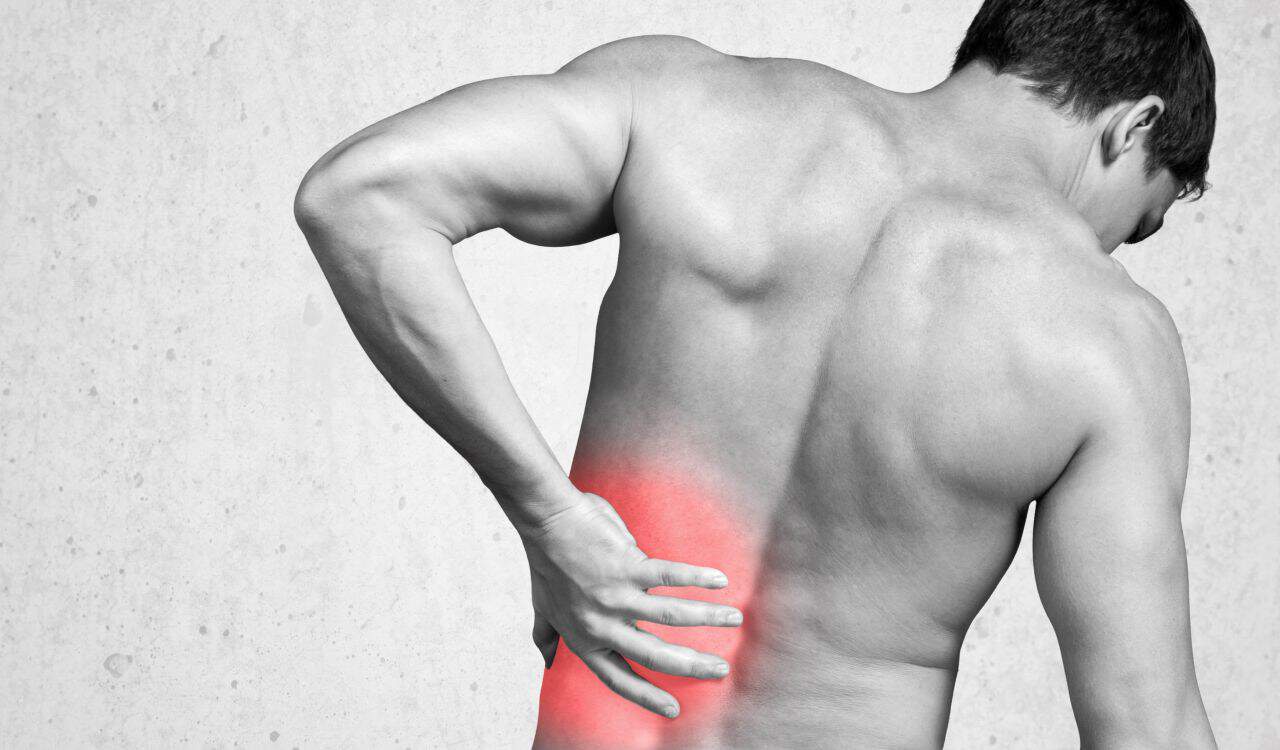
Acute and chronic nonspecific back pain can be movement based or constant depending on the underlying pathology or the severity of symptoms. This pain often leads to avoidance of movement, which is a normal response to pain, but often makes the problem worse.
What are Common Symptoms of Back Pain?
Now that we know what back pain is, let’s discuss common symptoms of the dysfunction. Symptoms and functional limitations of back pain include but are not limited to:
- Pain in the central lower back that may radiate across either side of the back
- Pain that radiates into one or either buttock, and in some cases into the thigh not past the knee
- Stiffness and tightness in the middle and lower back
- Decreased hip flexibility and strength
- Pain with prolonged sitting or standing
- Pain with bending, twisting, or lifting objects
- Difficulty walking due to pain
- Pain when performing daily activities such as getting dressed, bathing, or driving
- Difficulty finding a comfortable position while sleeping and rolling over in bed
- Inability to perform recreational or work activities
- Fear avoidance behavior
- Depression or sense of hopelessness in chronic conditions
What Causes Back Pain?
As mentioned above, there often is not a confirmed visual cause of back pain. However, given what is known about the anatomy and physiology of the spine and pain mechanisms, there are several structures that can be possible causes of back pain. Refer to this of the lumbar spine anatomy for the technical nomenclature of certain structures and how mechanics of the spine affect the following structures discussed.
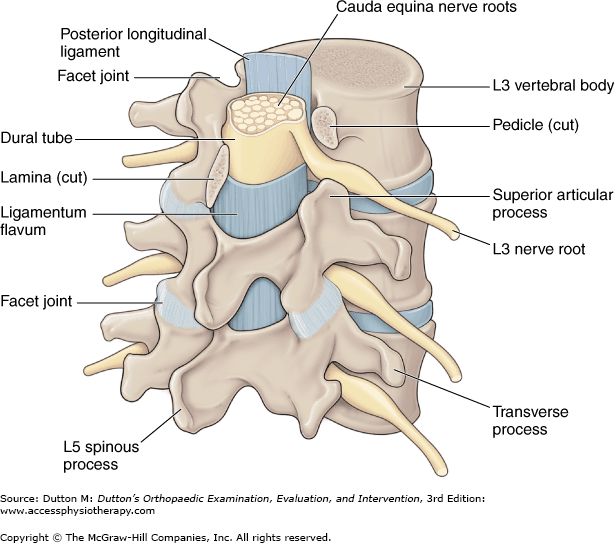
- 1. Disc Pathologies
Between each of our spinal vertebrae lies a disc that is made up of a viscous fluid surrounded by a layer of thick fibers. The purpose of a disc is to provide shock absorption and a smooth surface on which the vertebrae can move.Poor posture, bad lifting mechanics, traumatic injuries, or age related changes can cause the outer fibers of the disc to weaken, which in turn can cause part of the disc to push into the spinal canal or into the intervertebral foramen.This can be harmless, but if enough of the disc has moved into these areas, it can put pressure on a nerve root, causing irritation, local inflammation, and pain. The pain experienced from a disc bulge or herniation and be localized to the back, but can be severe enough that one may feel symptoms into the lower extremity.Additionally, discs may go through age related degenerative changes. With decreased disc height comes decreased space between the two vertebrae, and subsequently decreased space in the intervertebral foramen. This decreased space can put pressure on the vertebrae, joints, and nerve roots around the spine.
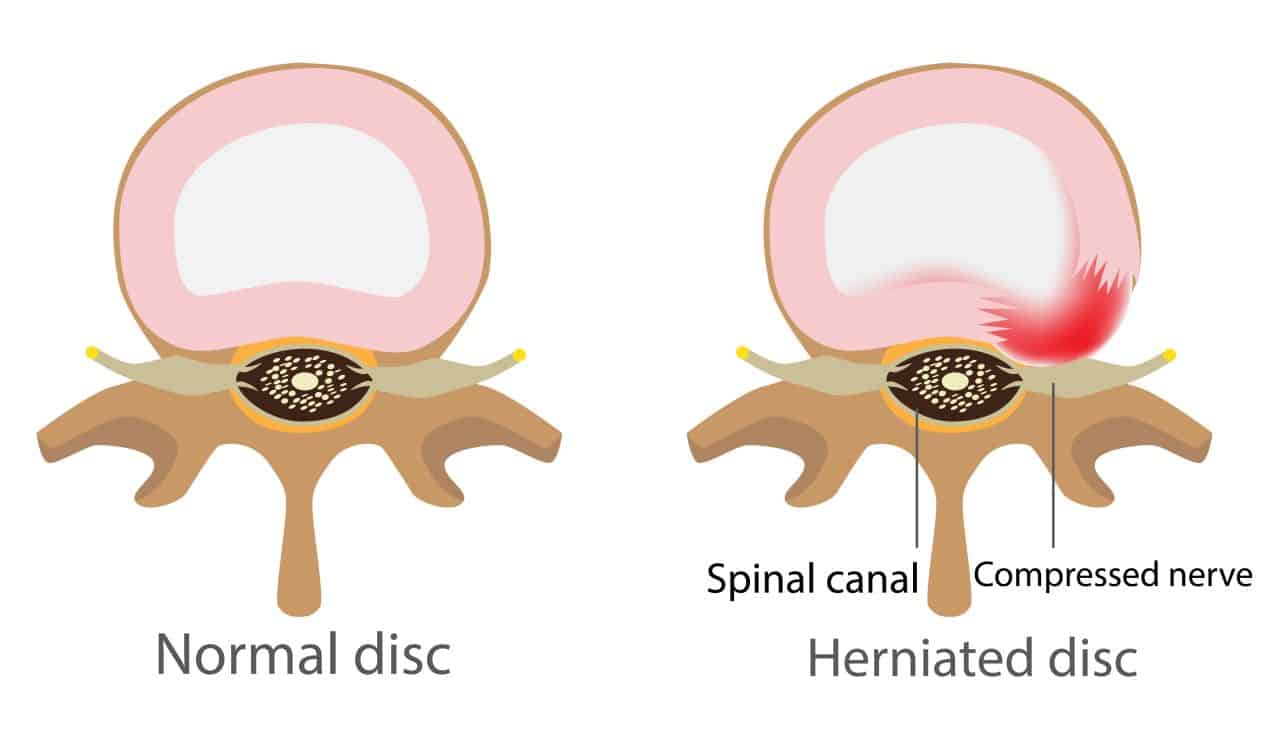
- 2. Facet Joint Pathologies
Facet joints are found at the top and bottom of each side of the vertebrae. Facet joints of one vertebra articulate with the facet joints of another vertebra to allow movements such as flexion, extension, rotation and side bending of the spine.Facet joints can become restricted due to trauma, poor lifting mechanics, prolonged sitting or standing positions, poor sleeping postures, or with degenerative changes. Restrictions in these joints can cause pain, decreased range of motion, and symptoms radiating into the leg.Facet joint pain can be caused by increased pressure on the nerve roots due to the joint’s direct effect on the intervertebral foramen, or from the facet joint itself. Since facet joints are innervated by spinal nerves, irritation of the joint can cause pain in the back. Due to the compressive nature of both pain sources, inversion therapy can provide relief from either source. - 3. Muscle Hypertonicity and Spasms
When someone experiences acute or chronic back pain, there is typically a component of muscle hypertonicity, or spasms. When the central nervous system senses tissue injury or even the threat of tissue injury, it sends signals to the surrounding muscles to tighten and protect the affected area.Muscles can stay in protective mode from seconds to minutes, days, or even months as long as the central nervous system perceives a threat to important tissues. This prolonged increased resting tone of muscles can cause inflammation, formation of trigger points (painful knots in the muscle fibers), and increased pressure on surrounding structures.This increased pressure from hypertonic muscles can decrease space between vertebrae and joints, decrease movement of the spine, and increase pain at rest and with movement. These symptoms will likely worsen when the spasms are more intense. - 4. Neural Tension
Neural tension refers to the mobility restriction of a nerve at any point along its pathway. It can be caused by decreased space between the vertebrae, muscle hypertonicity along the nerve pathway, or by adhesions in the connective tissue around the nerve.Since all nerves originate from the brain and spinal cord, the tension can occur right at the spine and cause pain in the area of tension. Although nerves do not have the same malleability as muscles, they still need to be able to shorten and lengthen as we move. If there is restriction in that mobility, then radicular symptoms will likely occur. - 5. Nerve Hypersensitivity
When acute back injuries occur, there is often tissue damage of some kind. Like any other tissue in the body, the tissues in our lumbar spine have the capacity to heal with time and the proper care. During this healing time, signals from the nervous system often restrict movement so that motions that might impede tissue healing do not occur.When pain transpires, it is normal to avoid movement that causes the symptoms. However, many people will often avoid moving altogether. This is usually problematic, as the more movement is avoided, the more the nervous system gets used to being “on guard” and accepts this sensitive state as its new normal.In the case of chronic back pain, there is a negative feedback loop that increases sensitivity of the nervous system. After tissues have healed themselves, the injured individual may return to normal movement and still feel discomfort due to the sensitivity of the nervous system in recent time. If the person then continues to avoid normal movement, their nervous system continues to sense that normal movement as a threat to the body. The person then moves less, and that level of decreased movement then becomes the new normal according to the sensitive nervous system.This cycle continues until the most basic of tasks will cause increased pain. This can cause a feeling of hopelessness and often further discourage the person from moving. Inversion tables can help provide relief in individuals suffering from this vicious cycle so that they can begin moving more freely and desensitize their nervous system.
All of these pathologies may cause back pain and must be treated with proper care for effective symptom relief. Several other factors that are correlated with increased risk of back pain include:
- Prolonged sitting during daily activities or work
- Excessive manual labor combined with poor lifting mechanics
- Obesity
- History of cancer, diabetes, and other major health complications
- Depression or psychological stressors
- Leg length discrepancy
- Improper gait mechanics
- Poor general health
Although none of these risk factors show causal relationships to back pain, they are modifiable factors in most cases that are worth exploring to decrease overall risk for developing the pathology. (1)
The Prevalence of Back Pain in Society
Now that we know about the anatomical causes of back pain, let’s discuss how prevalent it is in the population. Back pain is one of the most common musculoskeletal problems globally, and it is one of the most commonly researched because of this. However, the prevalence of back pain differs significantly between studies due to several factors such as study design, methods, population studied, and length of time studies were conducted.
A systematic review conducted in 2014 showed that globally at a singular point in time, the estimated prevalence of back pain is 12%. These numbers increase to 23%, 38%, and 40% for one month, one year, and lifetime timespans, respectively. (2)
Another study conducted demonstrated that in individuals between 24 and 39 years of age, chronic back pain prevalence was 4.2%. However, when the age range was expanded from 20 to 59 years of age, the prevalence of back pain grew to 19.6%. (3)
Additionally, a study of just over 3000 Swedish men between ages 69 and 81 found that 24% of the participants experienced back pain within the last 12 months. Almost two thirds of these individuals reported decreased ability to perform activities of daily living. (4)
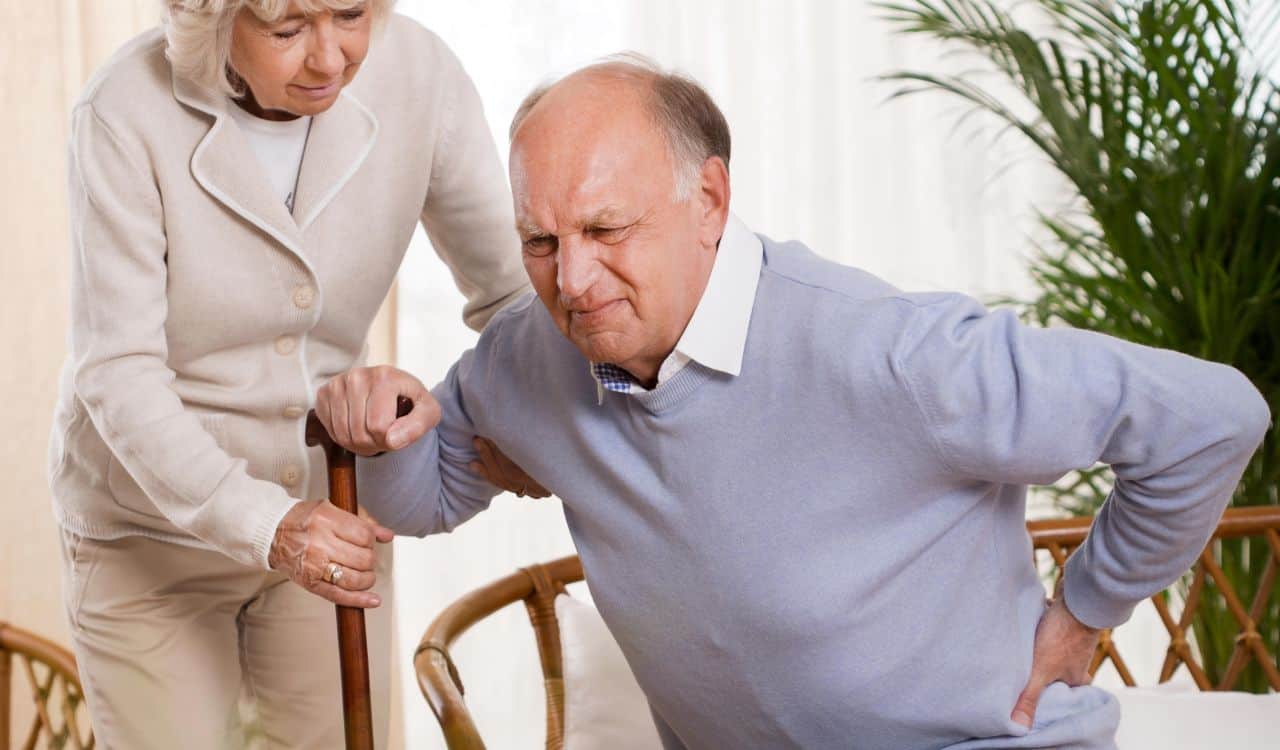
Such staggering numbers are concerning regarding this growing global health issue. However, current research supports effective treatment methods for back pain. One such treatment is inversion therapy and using inversion tables.
Spinal Decompression Therapy with Inversion Tables
Now that we have discussed the structures in the spine that can cause back pain, let’s discuss spinal decompression and how inversion tables can help relieve back pain.
Spinal decompression aims to decrease compression forces on injured or sensitive structures in the spine. When spaces between vertebrae are increased, a temporary improvement in disc height, facet joint space, intervertebral foramen size, and decreased muscle hypertonicity can be observed.
Inversion tables utilize gravity to induce a traction force through the spine. With this force, decompression occurs on all structures of the spine, including the discs, facet joints, intervertebral foramen, and lumbar musculature. The decompression of these structures can help relieve pain and subsequently improve perceived mobility, strength, and activity tolerance. Several studies support the use of inversion tables as an effective form of symptom relief in those with back pain.
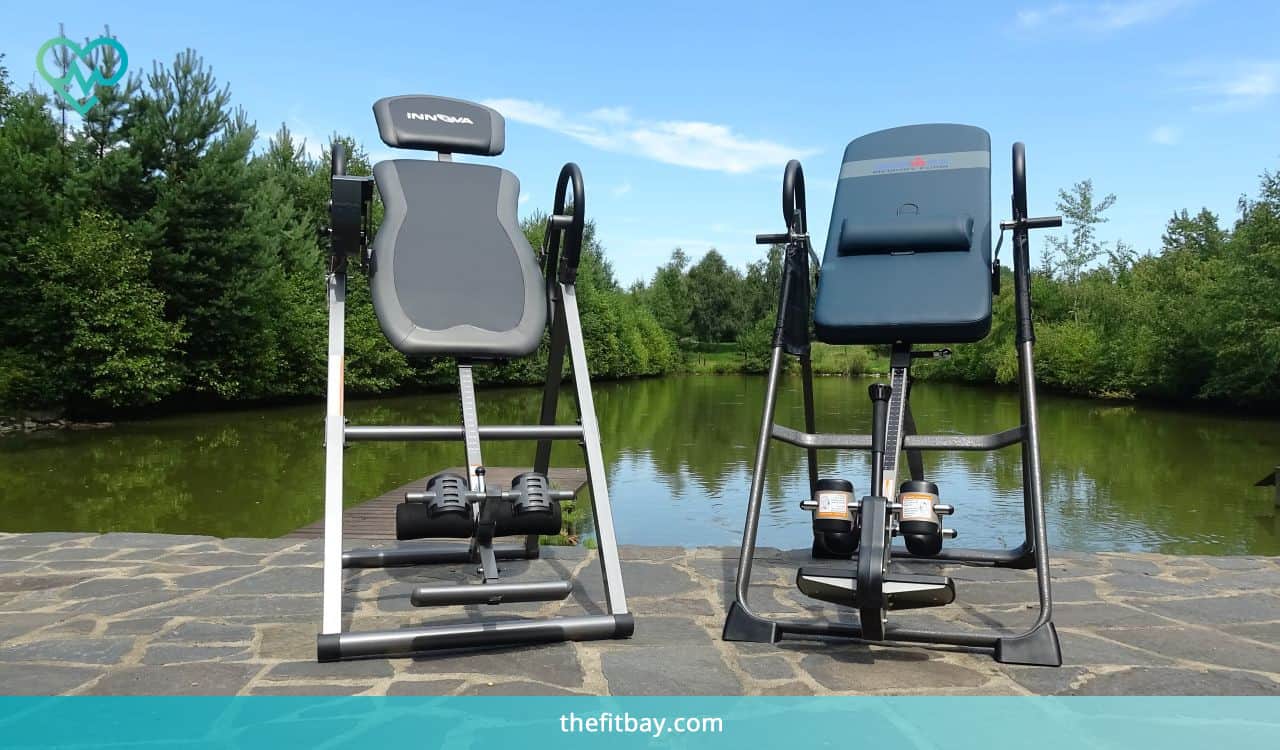
Do Inversion Tables Work for Back Pain?
Yes, inversion tables are effective in relieving symptoms related to back pain. There are several scientific studies that support this.
Studies conducted using inversion as the experimental intervention demonstrate that there is an increase in disc height, intervertebral space, and spinal length during and immediately following inversion. (5, 6, 7, 8) This is significant, as increased space and disc height allows for decreased intervertebral pressure and therefore a subsequent relief in symptoms from back pain.
Research also supports inversion tables as a low-risk intervention for back pain and sciatica. (9)
Inversion Table Treatment Protocol
The following recommendations for use of inversion tables are based solely on my knowledge as a physiotherapist on the topics of back pain, spinal issues, and inversion therapy. Because of the infancy of the device and the research being conducted, there are no specific evidence based protocols available at this time.
Beginners in using inversion tables or those in high levels of pain should begin at the low level of decline and gradually work their way to higher levels of decline after gaining more experience and comfort using the device.
Low decline
- Begin with setting the angle of inversion between 15 and 30 degrees
- Hang or perform exercises from 5 to 20 minutes as tolerated
- This stage is best for beginners and those with high levels of pain
Moderate decline
- Set the angle of inversion between 30 and 60 degrees
- Hang or perform exercises from 5 to 20 minutes as tolerated
- This stage is appropriate for those who have some knowledge on how they respond using inversion tables and who are in low to moderate levels of pain
High decline
- Set the angle of inversion between 60 degrees and the maximum setting
- Hang or perform exercises from 5 to 20 minutes as tolerated
- You should only use this angle when you are very comfortable with inversion tables and know how your body responds to the device
Exercises to Perform with Inversion Tables
While inversion therapy can be an effective form or symptom relief and temporary improvements in function, specific exercise has been shown in multiple studies to decrease symptoms and limitations from back pain and sciatica both on its own and with other treatments.
One of the most beneficial aspects of inversion therapy is its ability to immediately improve symptoms so that you can move with more ease. This means that you can use inversion tables and then immediately follow it up with movements that you were not previously able to achieve. Furthermore, you can even do stretches and stabilization exercises while on the inversion table so that you can teach your body how to move in these newly acquired pain free ranges.
Here is a list of exercises you can do while on an inversion table that will help your range of motion and pain. These are listed from least difficult to most difficult.
1. Diaphragmatic Breathing
- Many people with back pain do not properly engage the diaphragm when breathing
- The diaphragm is the primary muscle for inspiration and is essential for maintaining core stability
- Hang from your inversion table and practice filling your stomach up with air
- Your stomach should rise before your chest
- This exercise is great for those in high levels of pain or inversion table beginners
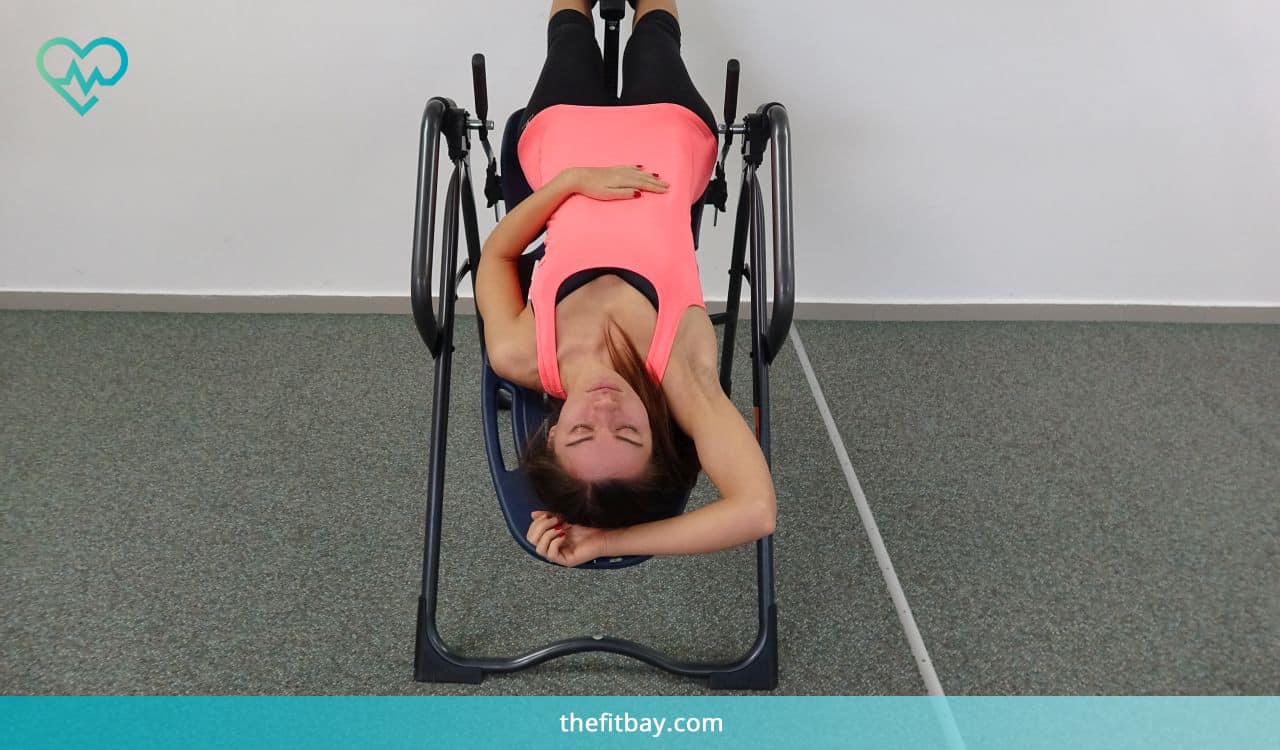
2. Trunk Rotations
- This is a simple exercise to stretch the lower back muscles and improve your ability to rotate
- Reach your right arm across your body to grab the bar on the left
- Hold this position for about 10 seconds and repeat towards the other sides
- Perform 10 repetitions on each side
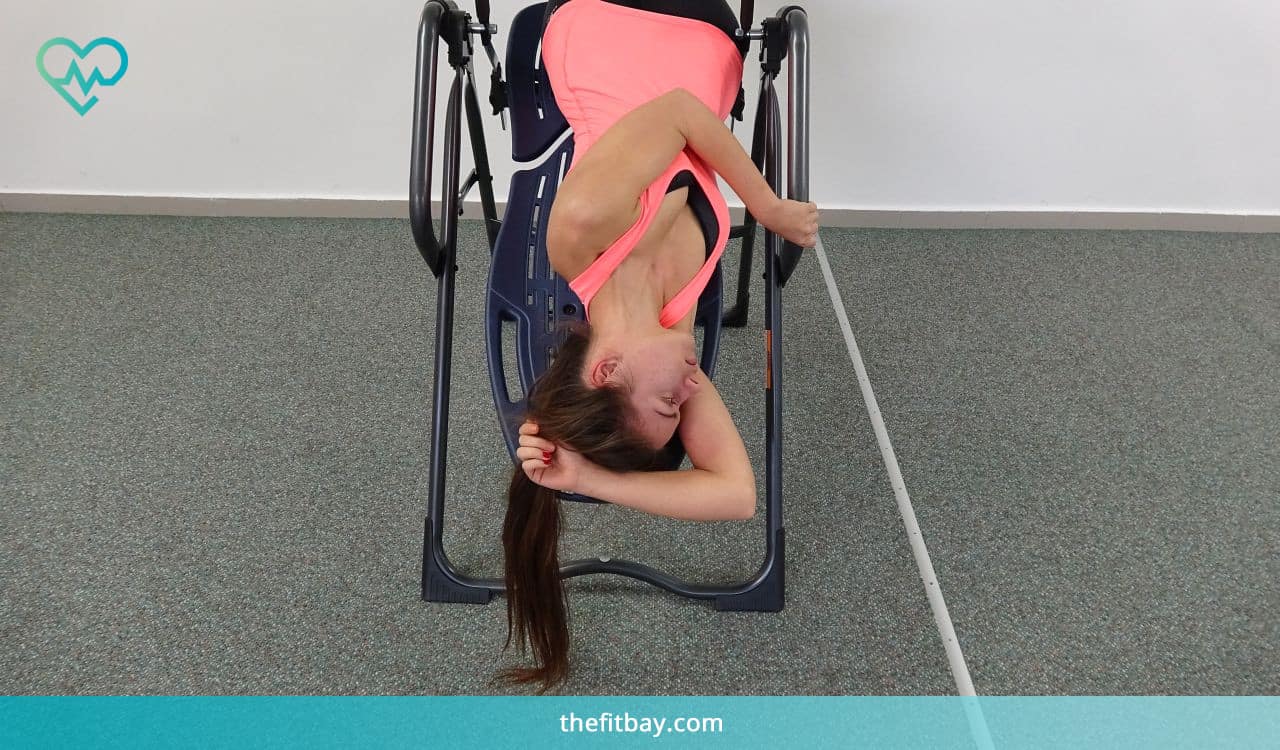
3. Overhead Stretch
- This simple stretch will help improve side bending of the lumbar spine
- Reach your right arm over your head and then towards the left side until you feel a stretch on the right side of your back and possibly into the right shoulder
- Hold this stretch for about 10 seconds and repeat towards the other side
- Perform 10 repetitions to each side
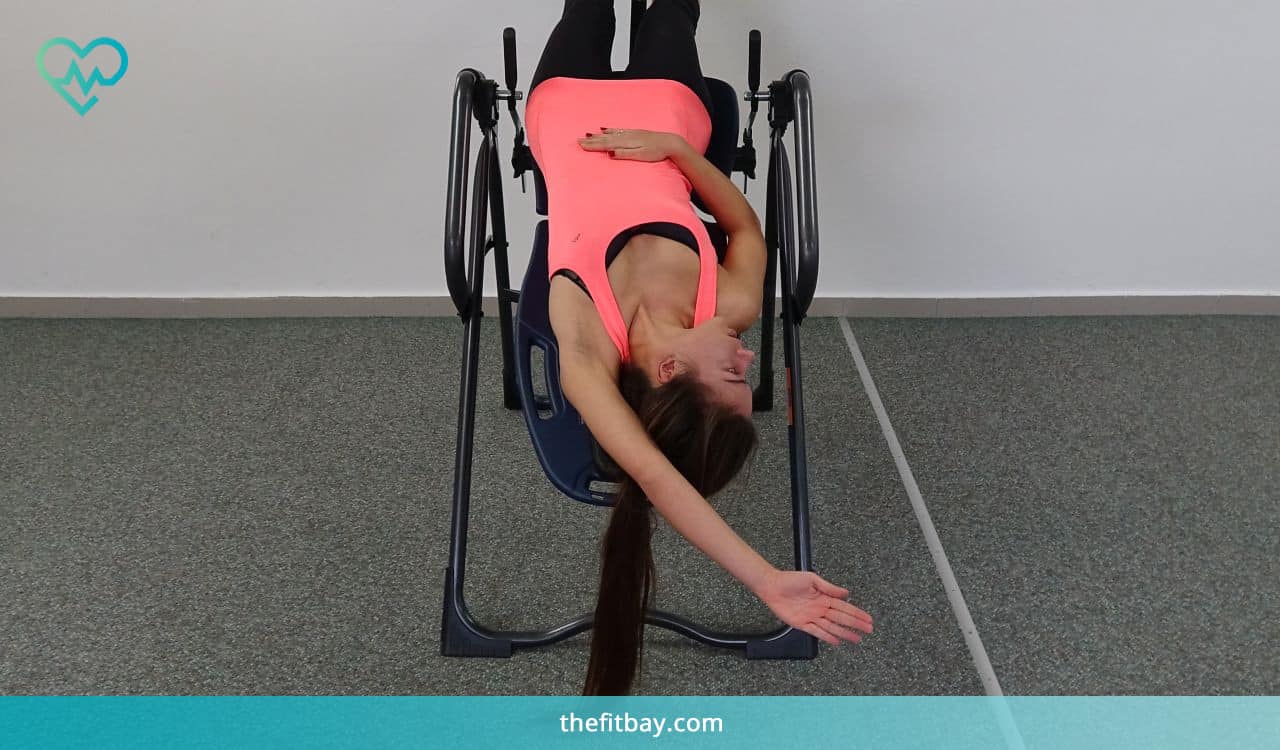
4. Pelvic Tilts
- This exercise will help improve flexion and extension, as well as control of your lumbar spine
- Begin by engaging your core muscles and try to flatten your back against the table. Hold this position for 5 seconds
- Next, arch your back in the opposite direction so that there is space between your lower back and the table. Hold this position for 5 seconds
- Repeat each direction 20 times
- Move only in a range of motion comfortable for you. If you have significant symptoms, decrease your range of motion to a tolerable position and increase your range only when you feel able
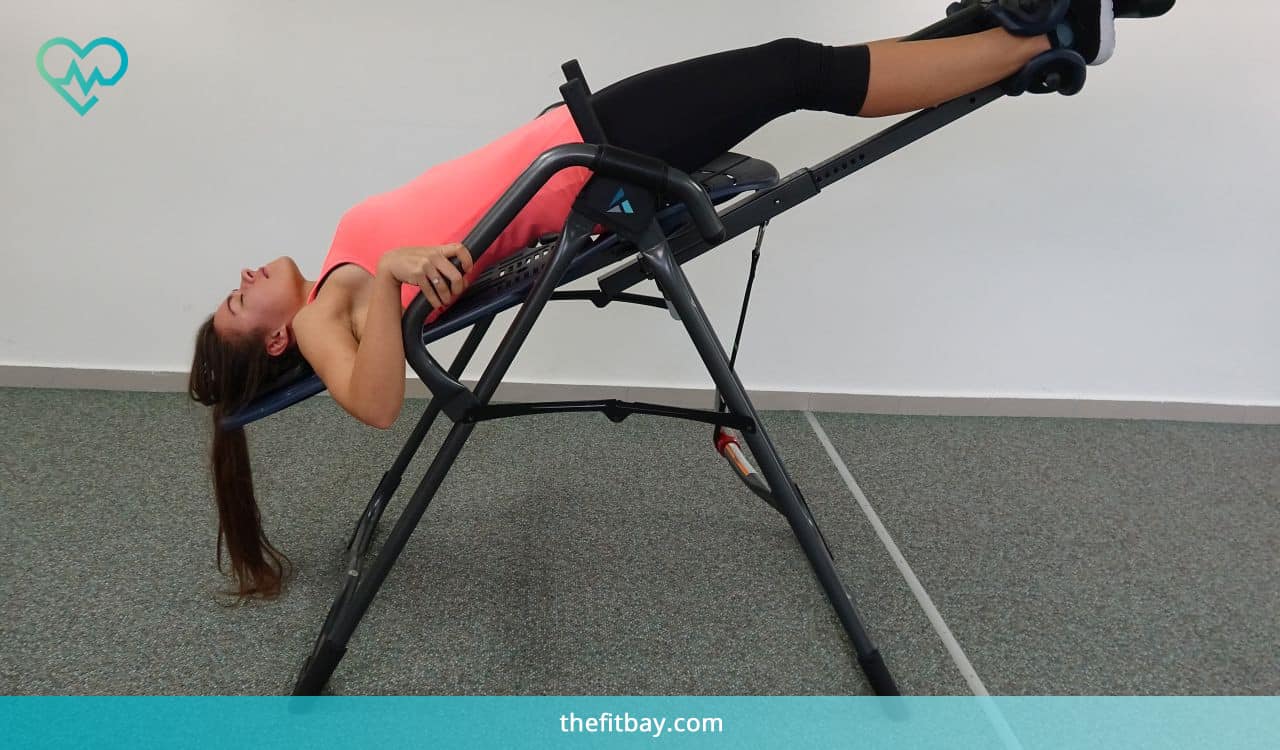
5. Crunches
- This exercise is to help abdominal strength and core stability
- Put your hands behind your head or over your chest, contract your abdominals, and crunch your shoulders off the table
- Perform 20 repetitions and take a rest break
- Inhale air as you descend and exhale as you ascend
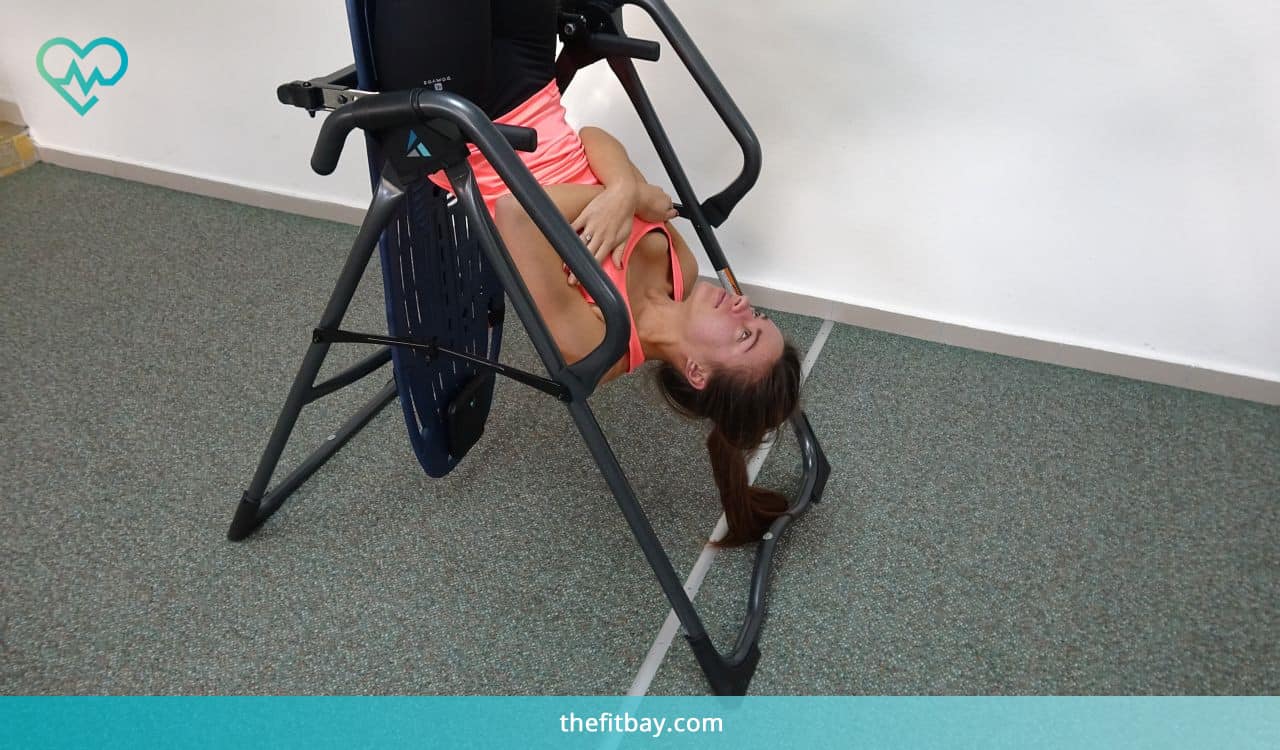
Summary
Back pain is a common musculoskeletal problem that is encountered by 40% of people in their lifetime, and can severely inhibit these individual’s daily function. There are a variety of causes and risk factors that can contribute to low back pain, and these can lead to both acute and chronic conditions.
Inversion therapy has been shown to have benefits in relieving symptoms from back pain. Inversion tables are a convenient and safe intervention that individuals with back pain can perform and progress as a home remedy for their symptoms. They can also be combined with exercise to create more pain free movement, facilitating improved function and return to normal daily and work activities.
There are many studies that support the use of inversion tables as an effective form of treatment for back pain.
For those suffering from back pain, an inversion table could be an exciting and effective new way to approach and improve your symptoms.




